
Mixing Musical Theatre
Andrew Bruce, owner and founder of seminal West End specialists, Autograph Sound, charts the history of the mixing console in musical theatre. From The Trident Fleximix To Digico Sd7T.
Story: Andrew Bruce
We didn’t realise it at the time, but mixing on a digital work surface was something we had been slowly working towards since the very start of our company — a subconscious vocation, if you like. It took a while, but we gradually built up a list of indispensable features for the ideal theatre console.

1973: WHERE IT ALL BEGAN
When we first started in 1973, we had to adapt products that patently weren’t suited to theatre in order to make them useful. To start with, we were mainly doing plays, but coming from the Royal Opera House [where Andrew was head of sound at the time], music played a very big part in our lives and gradually we started doing more musical projects. In the course of the first 15 years, we accumulated a group of features that were absolutely imperative for theatre.
In 1973, there were no loudspeakers, mixers, radio mics or miniature mics that were made specifically for theatre use. And there were only three legal radio frequencies we could use. We had to learn how to persuade manufacturers to see things our way, which was almost impossible to do because we had no money to commission anything — manufacturers’ first question is always, “how many will you order if we put time into this?”.

1976: TRIDENT FLEXIMIX
When we were awarded our first musical contract — we supplied the equipment for A Chorus Line in 1976 — Abe Jacob [Broadway sound designer, ‘The Godfather of Theatre Sound’] had chosen a console we otherwise would normally have had no prospect of being able to buy ourselves, but in this case we were protected, because we had a guaranteed income from the production.
That was the very first Trident Fleximix off the production line, which was a very early and quite rudimentary modular mixer aimed at the live market. It had one particularly good feature — you were able to choose what overall size of frame you wanted from a selection of different sized stock items and bolt them all together. It was cheap(-ish) and cheerful and you could mix and match modules in the frame so you weren’t limited to a fixed layout of channels and groups. The main attraction was the modularity and flexible frame size.

For about six months [we] did do some work on a first-version digital Cadac console … but it wasn’t long before he said, “we just don’t have the money required to do this”
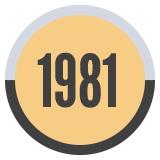
1981: MIDAS TR
We did a series of shows for Abe using the Fleximix including the original Evita, but it was Cats in 1981 that proved to be the next significant milestone. It was a big step up, a real mainstream Andrew Lloyd-Webber musical with parts of it dizzyingly close to rock ’n’ roll; Abe had chosen a Midas TR console, which was originally designed for the National Theatre and had an output matrix in it. We had modularity, now we had a theatre matrix…
Nine years in and by this point we were getting big enough to commission our own consoles.
Not long after Cats we did a show called Song & Dance at the Palace Theatre, which was another Andrew Lloyd Webber show. Julian Beech and I designed it, but Andrew insisted that Martin Levan — his engineer from Morgan Studios — mix it.
We had put a Trident Trimix studio mixer on the show, and it wasn’t great — we were following a path we knew wasn’t right. Martin knew Clive Green from Morgan Studios, because they had a big Cadac desk. I also knew Cadac from my time at the Opera House as they were one of the choices when we were in the market for a proper console — but they didn’t make anything small enough, and we chose a Neve instead. What I didn’t know was that they’d gone out of business in the meantime. Martin suggested we pay Clive a visit because he knew Clive had bought back the remnants of the company and was hungry to find a new niche market.
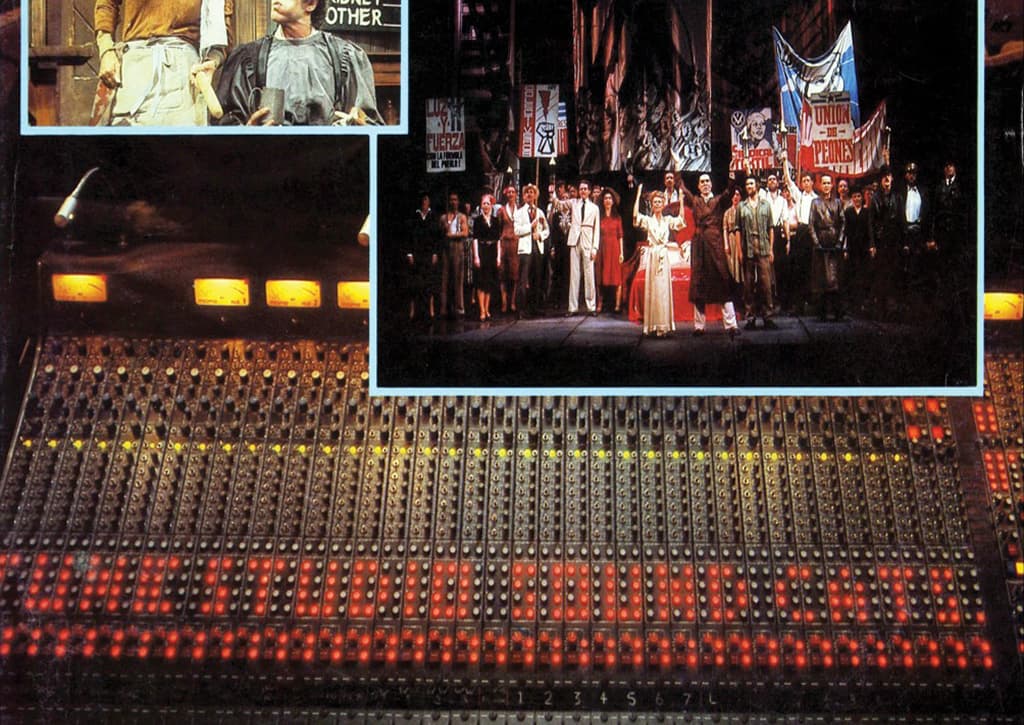
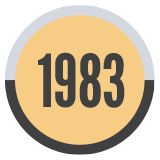
1983: CADAC ‘THE COFFIN’
This coincided with a show that Martin had been asked to design — Little Shop of Horrors, which was going into the Comedy [now the Harold Pinter] Theatre — and we had a very specific brief that we couldn’t take out more than four seats. We needed to commission a console that would fit into that space, and Clive agreed to build it. It was conceived, designed, built and delivered in four weeks from scratch.
The only things he didn’t deliver in the time were the power supplies, so we ran it on bench supplies for a while. We still have that console today. It was christened The Coffin, but it was a brilliant little mixer that sounded absolutely extraordinary; we now realised there was a manufacturer who saw the theatre as a recognisable market.
By now, we had also established a relationship with John and Helen Meyer through Abe, who had come out with the UPA loudspeaker just in time for Cats, which was turning out to be an ideal theatre speaker. They knew the market was there for developing theatre speakers — small and powerful because Victorian theatres often have small proscenium arches where traditional loudspeakers just don’t work.
So, by this time, there were two manufacturers who were taking notice of theatre in a big way.

STARLIGHT EXPRESS ONE-OFF
The next milestone for us was Starlight Express; it was Martin’s second show and was a huge leap in size and complexity. What we did makes my blood run cold to this day — we commissioned a console that was a complete one-off and had no use whatsoever outside of that one specific show. It consisted of two consoles in one; it was a vocal console that only routed to two buses, and an orchestral console that routed to many more with the equivalent of a monitor matrix on every channel — using screwdriver pots rather than switches to route to the groups. It was designed to fit with the concept of the show, where the back wall of the stage was to be composed of just loudspeakers, with every loudspeaker being a different instrument or section of the band. It didn’t quite work out that way, but it came close. The console cost a fortune and, if the show had folded, we would have been stuck with this monumental white elephant. It did have another thing, however…
PROTO SCENE AUTOMATION
It was 1983 and shows were becoming complex enough that the actual operation required some kind of assistance, and computers were reasonably commonplace. Clive Green commissioned a chap called Derek Dearden, who was a professor of computing at London University, to build a rudimentary computer that could remember control group assignments. You could program a series of cues that brought the elements you wanted to the central VCA section, so the operator wasn’t scooting up and down a huge console trying to find things in the dark. That was the beginning of a real sea change in the way mixing in the theatre developed; the idea that things should come to you — and that required computer help.
Meanwhile, we had started a program with Clive to design a series of standard consoles for the hire company [Autograph] that could be used for any musical. This idea of building consoles specifically for each show couldn’t last forever. Luckily, Starlight lasted 21 years so we got our money back. Incidentally, the computer — just a card with wires hanging out of the back of it — only failed once during that time.
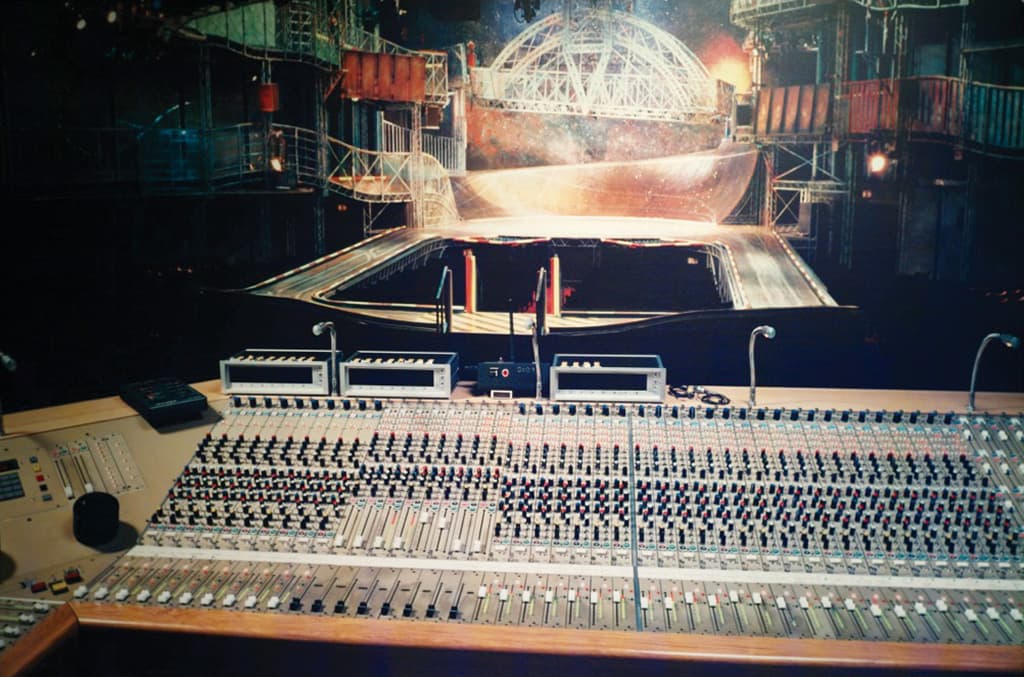
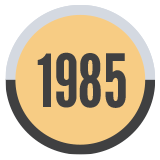
1985: CADAC A TYPE
So we had started to develop this range of consoles with Clive that embodied all the various things we had learned up to this stage — modularity of frames, output matrix, balanced bussing, all those things that were, by now, deemed totally indispensable. The simplest of these was the A-Type console, which was designed without any automation as that was still a bit experimental and added an unwelcome level of expense. We put the first one on Les Misérables in 1985.
That particular console ran eight shows a week for 15 years before being replaced by an automated J-Type two years before the show moved from the Palace to the Queen’s Theatre in 2002. While the A-type was totally manual, the J-Type that replaced it for the last two years had VCA assistance from the computer, which instantly simplified a very busy three-and-a-half hour mix.


1989: CADAC E TYPE
In the intervening years, we had commissioned the next series, the E-Type, from Clive, which had expanded facilities — VCAs and programmable control groups became a standard feature so we could start to automate properly. We started developing our own software to control the assignment of control groups, but Clive also had his own versions most of which, I’m bound to say, were much inferior. Developing our own software allowed us to expand on various extras, like having active legend strips sitting above the control group faders that displayed the names of individuals or groups of people who were assigned to them on a cue-by-cue basis.
It was an ever-expanding brief and widening set of features that we were working on over the years. Miss Saigon in 1989 was the first show that had the legend strips on an E-Type, so it was all coming together.
Nevertheless, these were still big old analogue consoles that were taking up more and more space. Cameron Macintosh in particular wasted no opportunity in pointing out how much money he was losing because of the number of seats we took up, and could we not work towards the same sort of thing that the automation and lighting guys/gals had done? It was an interesting point — but we were struggling with the old analogue/digital debate: which sounds best?… not something that relevant to automation or lighting, and which only the most astute producer would understand. But we were definitely at the point where we were having to argue the toss with Cameron and other producers saying, “analogue is still absolutely the only way to go and analogue requires space. There’s no assignability; we can’t bury channels and bring them to the surface, they all have to be there simultaneously. It does mean the operator has to do a lot of moving around during the show fixing things, but right now there is no viable alternative.”
We started having to dig our heels in with the producers, who were the ones giving us the jobs, so we had to look for counter arguments, my favourite of which was: “Well yes, it’s all very well saying you’re losing money because of the seats we’ve taken out but that only applies if you’re 100 per cent full all the time, which is not necessarily the case.” Sadly for my argument, it was exactly the case with most of Cameron’s shows at the time.
As a result of this relentless pressure from producers, we were constantly on the lookout when the first digital consoles started appearing. We listened to them and tried to make sense of their user interface from our rather specialised point-of-view then, without exception, rejected them for our own use because of their lack of features and their sound. We continued down the route with analogue and we had a lucky break when I was approached in 1992 out of the blue by Chas Brooke and Nigel Olliff, who were both then with BSS, to see if I was interested in joining in a development program with Soundcraft.

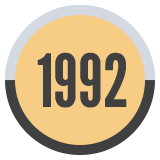
1992: SOUNDCRAFT BROADWAY PROGRAM
Soundcraft had decided that theatre sound was really worth taking notice of, and approached Chas and Nigel to find people in the industry who could help them define the feature set — both hardware and software — that should be included in this new assignable console. It was very, very enlightened of them at that time. I jumped at the idea because we knew we had to talk to somebody and it would be great to be there on the ground floor to influence the hardware, as well as the software features. So we had a series of meetings with the team they had put together to simultaneously define and develop the software and hardware.
It gave me an opportunity to really sit down, with the help of everybody here [at Autograph] and several people outside the company, and to think through what we needed in terms of software and particularly the layout of controllers we would want to see on the surface while keeping it small, but not too small. More than two years of work went into that — and it was quite detailed. We got into some genuine blue-sky thinking about the sorts of routines we wanted to incorporate into this clever new digital console that had never been possible before and would make our lives a whole lot easier. It was really the chance of a lifetime to make a difference for theatre sound.


1996: BROADWAY PROTOTYPE
I then had an opportunity with Cameron — who had never let up with the pressure to downsize — to wheel out the very first prototype on a musical called Martin Guerre, which he produced in 1996. This was the perfect test-bed because I knew Cameron well and was able to say to him, “we’ve finally got something we’d like to try… we’re not entirely confident about it because it’s very early days but we’ve been working on it with a manufacturer for nearly three years. How about we try putting it in on your new show? But, just in case, we’ll put an old Cadac in as well for technicals until it’s proved itself, so if it fails we’ll have something to fall back on.” He said, “fine, let’s try it.”
So we did, we installed the first Soundcraft Broadway at the Prince Edward theatre in the stalls on the right-hand side of the aisle with a Cadac J-Type on the left-hand side of the aisle at the Prince Edward. Which unfortunately meant that we had to have two completely separate cable infrastructures because all the racks for the Broadway were under the stage, while there was a complete alternative set of wiring to the Cadac in the front of house.
Ultimately, the Broadway never actually controlled any of the audio on the show. It fell over so frequently that, almost on the first day, we changed to the Cadac and never changed back. We let them stay there while they systematically tried to bug fix it, but the networking technology of the time was far too slow. It could successfully handle a single microphone, even as many as five, but once even moderate amounts of data started flying around the network between the stage racks and the front-of-house surface, it fell over instantly.
It was very depressing, particularly for them but also for us, because we were interrupted in our development process and we had to turn all of our attention back to doing things the old-fashioned way. Nevertheless, it had got the ball rolling and after they took it out, they continued development assuring us they had learnt a lot of valuable stuff.
That was until the new and incoming head of Harman came to see me one day and said, “I’m afraid we’ve decided to knock it on the head because it’s taking up too much development time and resources, and we’re actually falling behind the other manufacturers because they have all started to develop smaller consoles with limited digital implementation and automation.”
CELINE: OFF BROADWAY
The Broadway had gone on to do a Celine Dion world tour before gracefully fading away. I lost touch with them after our aborted attempt so I don’t know how they managed to get it to that point, but good on them for persevering.
I think they learnt the networking was the bottleneck. I can’t remember what the networking speeds were, but it just couldn’t keep up. The hardware was beautifully made and, although we very rarely heard anything out of it, the digital control of analogue seemed to be fine and the surface seemed to work, it was just that the exchange of information couldn’t keep up — by a factor of a hundred.
The work that had been done remained valid though. We had identified basic principles, sorted them out in our minds, re-evaluated them and then passed them on to the software writers to interpret. We were forced to think about exactly what we do and how we do it, and the order of things and their priorities. Indeed, at the end of the Soundcraft project I was left with two folders of information, which I knew would be useful one day.
After that, we returned to Cadac and Clive with our tail between our legs. He knew we were under increasing pressure from producers to come up with something smaller (and therefore assignable), and he knew he couldn’t deliver. Nevertheless, he said, “come on, let’s start on a digital console.” For about six months, he and I — using the same information, because I hadn’t been asked to sign any non-disclosure agreements — did do some work on a first-version digital Cadac console. And some good came out of that, mainly hardware layouts, but it wasn’t long before he said, “we just don’t have the money required to do this”. So, reluctantly, we shelved it again.
In 1973, there were no loudspeakers, mixers, radio mics or miniature mics that were made specifically for theatre use. And there were only three legal radio frequencies we could use.
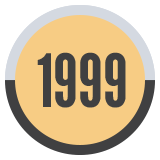
1999: CADAC SAM SOFTWARE
We continued designing shows using the J-Type, which was his latest analogue console. Simultaneously, we had continued with the development of our in-house software to control the E and J consoles but then Clive, for some inexplicable reason, decided he would no longer share the code with us for the latest consoles and we hit a brick wall. So we were forced to abandon the development of our in-house console software and adopt his, which was called SAM. We did some work with Philip at Cadac on this and many elements — visuals and functionality — became clearer as did, in some cases, their undesirability. This only further refined our set of essential features that had to be in a digital console. SAM was first used on Mamma Mia, also at the Prince Edward in 1999.
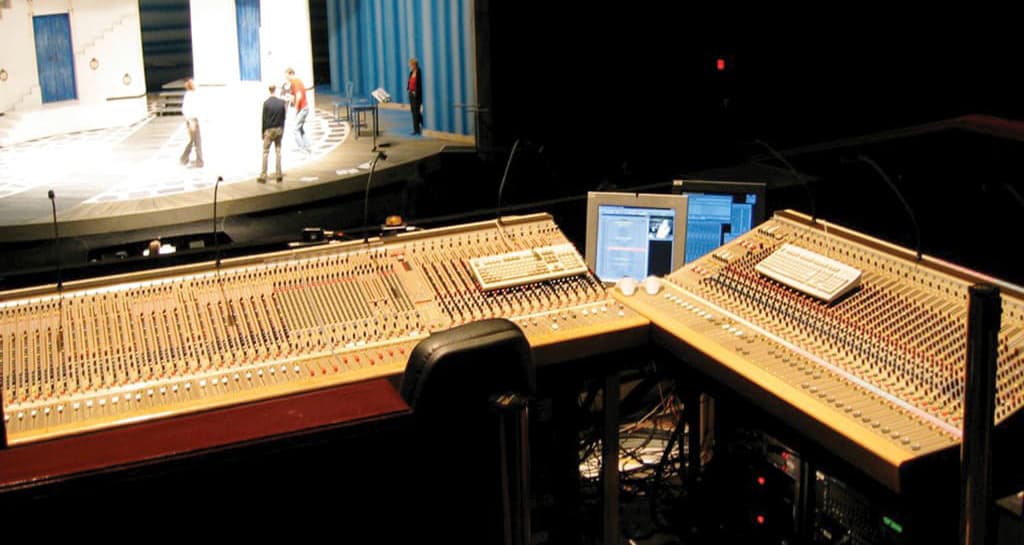

2002: GETTING TO KNOW DIGICO
2002 was the year Digico first showed its D5 Live at the PLASA show in London. I remember being told by a colleague, Bobby Aitken, that I should go along and take a look, because this was the next step in digital consoles. At this point we’d pretty much written off anything that existed in the digital console world as being not much use for musical theatre. We understood the direction that conventional software had taken but, to be quite honest, I didn’t understand how the system of libraries and scope could possibly be relevant to us because the way we work is very, very specific and is quite unknown outside of theatre.
I hung around at the end of one of his demonstrations, took a look and said [to Digico MD James Gordon] that I’d done a bit of work with Soundcraft and Cadac, and had a mine of information on an application they may not have considered. Would they be interested in evolving something specifically for the theatre?








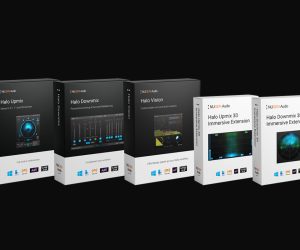




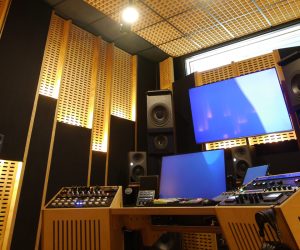





RESPONSES